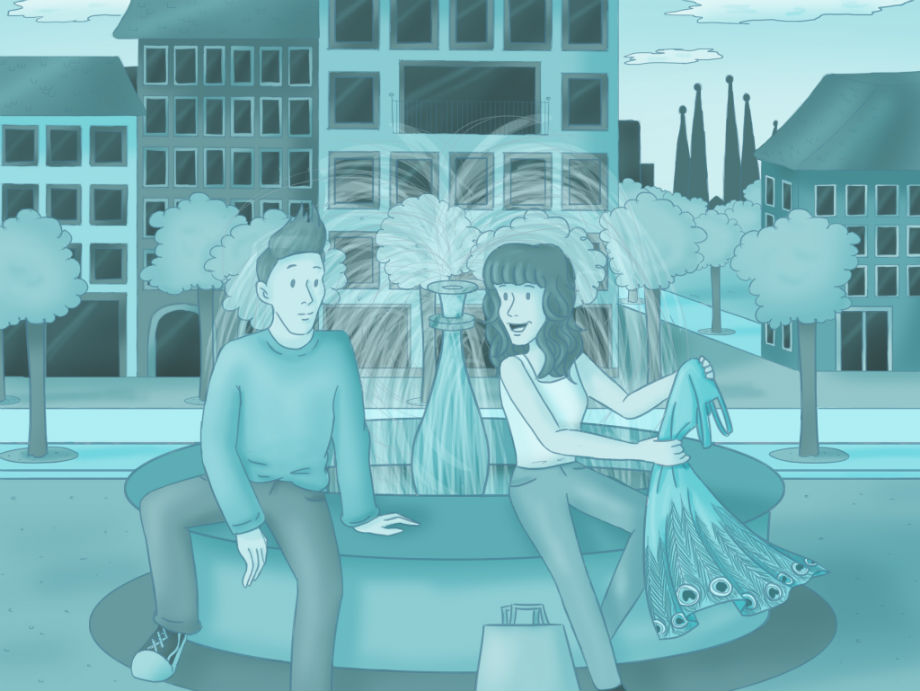Structural Colouration

Max was suffering quietly as he accompanied Lily to one of the most popular shopping districts in Barcelona. Lily on the other hand, was over the moon. She was touching fabrics, trying colours and mentally calculating the maximum she could spend.
“Do you think we could leave now and try to do something more… sciency?” Max said in a tired voice. Lily stopped but not because of Max. She froze in front of a shop, staring at the dress in the window. “This is it” she said and raced inside. Max looked at the window and froze. “Oh no!” he muttered and hurried after her.
Lily was caressing a dress that resembled a peacock. Max rolled his eyes and asked her what was so special about that dress, anyway.
“Well, you wanted to do something more relevant to science, didn’t you?” Lily asked. Max was puzzled. “I didn’t mean avian biology” he managed to say. Lily laughed. “This is high tech structural colouring!” she corrected him, paid for the dress and left the store, holding it like a prize.
They sat down on the edge of a fountain and Max asked for some more clarification. Lily started by telling him that many centuries ago, Isaac Newton and Robert Hooke suggested that the peacock’s feathers are coloured blue and green because of their structure. Their surface morphology makes light reflect in such a way that we see them coloured, while in reality they are pigmented brown with melanin.
“In this case light behaves as a wave” Lily said and threw a tiny pebble in the fountain. The pebble caused a circular wave to spread. Next Lily threw three pebbles together. They all created waves that interacted with one another. At some points, the waves added together amplifying each other while at some other points, the waves cancelled each other out.
“This is wave interference – I know this phenomenon” Max exclaimed.
The surface of the material the dress is made of, as well as the actual peacock feathers, consists of tiny parallel lines. This microstructure reflects light at different angles. This way, different colours appear at different angles.
“Please tell me this has more applications than clothes” Max interrupted.
“This is haute couture!” Lily protested. “And yes, there are numerous applications. Surfaces that provide radiant colours but also surface camouflage thanks to these biomimetic materials. Moreover… low reflectance glass… or efficient optical switches”. Max liked this and nodded in agreement, satisfied.
“This structure allows us to control light at the nanometre scale. This is how the security hologram on your credit card is made! Imagine antireflective surfaces for super-efficient photovoltaics! Imagine chips, optical chips using light instead of electricity. They carry data way faster”. Lily concluded.
“You know what? After all this, I don’t find the peacock dress so terrible anymore” Max said happily, trying to give a compliment. Lily gave him a nasty look but couldn’t resist adding that it is not only peacocks that have this special feature. Butterflies, other type of birds like bee-eaters and macaws also share similar structures. And with that, she got up, announcing it was time to go back to the shops!
